A few years ago, anxiety took over my life. Every decision I made, I scrutinized over and over, sometimes sleeping for a few hours only to wake up worrying again. My psychiatrist prescribed me Xanax, and while it’s an incredible drug, it’s not one I like to use often. Thus, when making my list of 30-day challenges, I knew I wanted to start with something for relaxation and calmness: the 30-day meditation challenge.
I’ve tried various forms of mindfulness over the years, including meditation and yoga. Unfortunately, they never stuck. I’d miss a day or two and then lose interest by the end of the week. That’s why for these challenges, I instituted ideas from Matt D’Avella’s Two Day Rule video. He states that you’re likely to miss a day or two a month while building a new habit, but for consistency, it’s integral that you never skip out on something two days in a row. It was a good way to keep me in check and on track to completing my goals.
To me, having a clear mind is the perfect way to start your morning. Plus, if it was going to help with my anxiety, doing a 30-day meditation challenge was a no-brainer. What I realized was that repetition was power, and the more often I meditated, the stronger that muscle became. That’s why I made sure to integrate meditation and mindfulness into our Become a Dudefluencer program.
A brief inquiry into meditation.
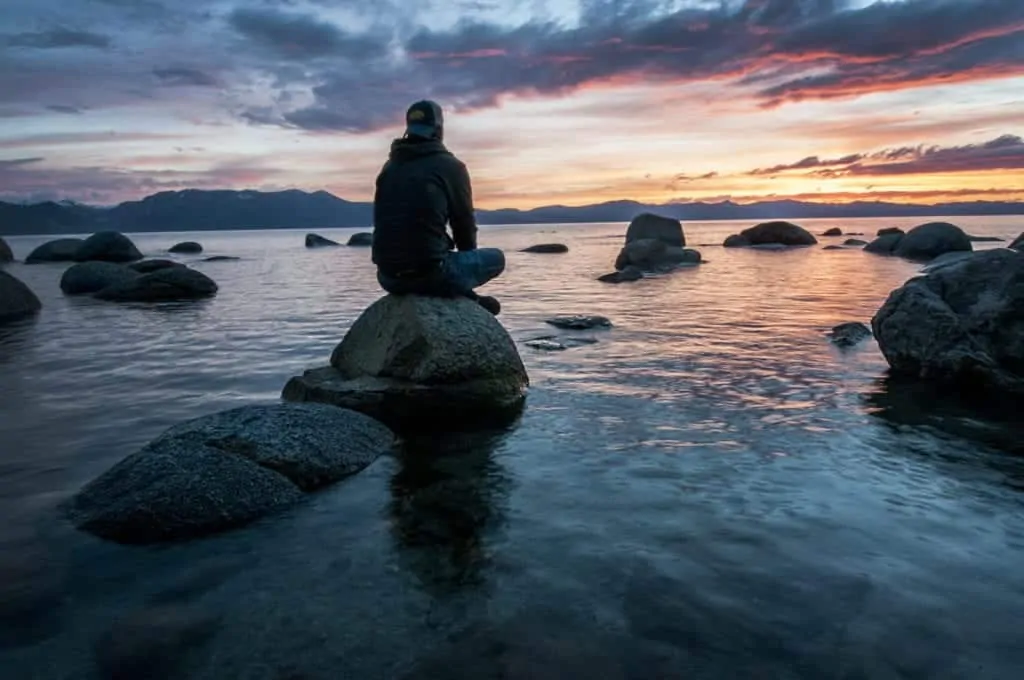
Since 2012, the number of people who meditate has tripled and is quickly becoming one of the most practiced forms of mindfulness around. More schools are implementing meditation and yoga into their curriculums, while the availability of mindfulness apps across all platforms allows adults to practice meditation on the go.
The research out there on the benefits of meditation is still small; the studies favor meditation. One study concluded that meditation improves anxiety, depression, and pain. Research from the Journal of Occupational Health Psychology “reported significant improvement in well-being, distress, job strain, and perceptions of workplace social support compared to the control group.” It should be noted that while meditation lowers symptoms, but does not remove them entirely.
I realized early on during my challenge was that I had already been exposed to different forms of meditation. During one of my therapy sessions, my therapist and I spent the entire session working on breathing techniques to help control my anxiety. He put both hands on his belly, took a deep breath filling the lungs, breathed out until what he called “the death rattle.” It took us nearly an entire session for me to figure it out, but I found myself using those deep breathing techniques during the workday.
So going into this 30-day meditation challenge, it wasn’t about pushing myself to do something extreme; I wanted to challenge myself to do something healthy and hopefully longlasting.
Where do I begin?
Before getting started on my journey, I knew I wanted to find some sort of phone application to guide me. Hopefully, something with a clear introduction, and cheap (i.e., free). I’ve tried Youtube videos and yoga before, but I also knew that there were a bunch of phone applications that were well-regarded and scientifically backed. I singled out two: Calm and Headspace.
Calm
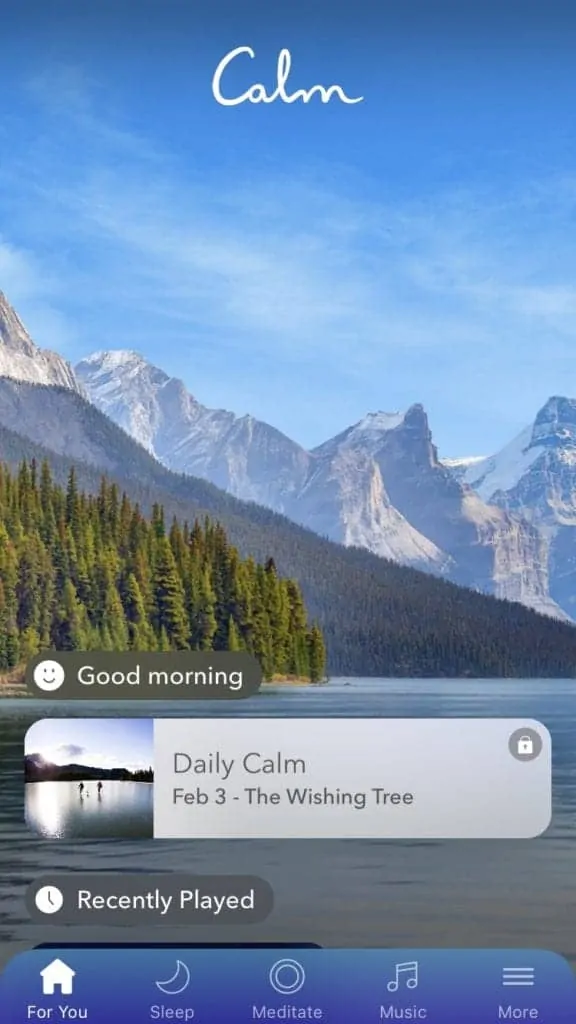
My initial search led me to Calm, an Apple Best of the Year app winner. I was drawn to it mostly because Calm features a course titled “Train Your Mind” hosted by Lebron James. And while I wanted to jump right into the James mindset, I knew I needed to start small first.
Outside of James, Calm also offers narrated stories from Bob Ross, Eva Green, and Matthew McConaughey. Each story is around 45 minutes long and meant to calm you to sleep. Unfortunately, a lot of these are behind a paywall, and I wasn’t sure if I wanted to go all-in yet, so I stuck with the free offerings.
Opening the app, the sound of rushing water down a lake greeted me. There were a few birds whistling in the background, I was embraced by the peaceful sounds of nature.
My meditation goals were simple: a morning routine, an evening routine, and one that I could utilize independently depending on my mental state. That’s why I started with the “7 Days of Sleep” program. The program always begins with a brief introduction about sleep, like for episode one, the topic was understanding sleep.
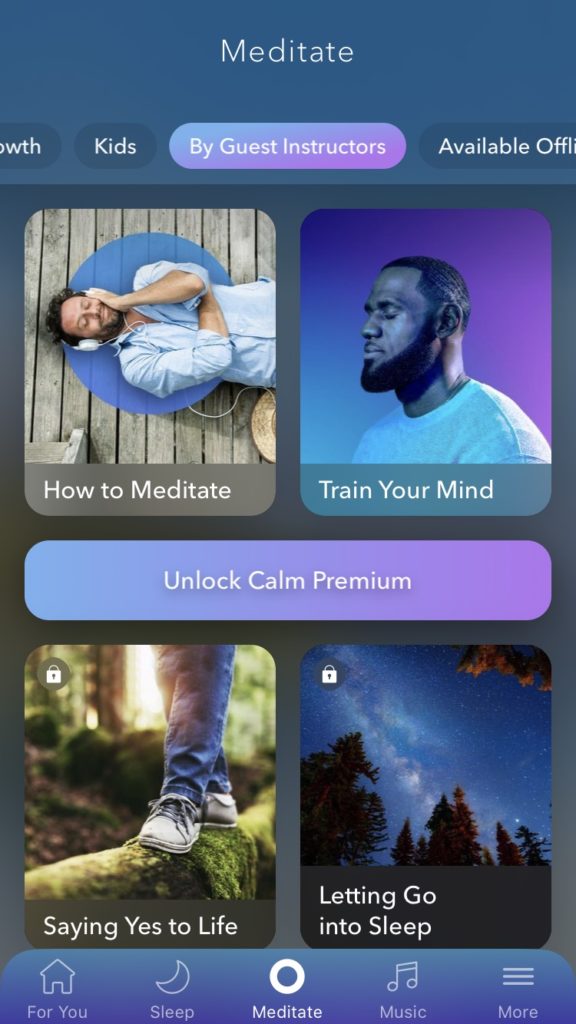
For the next three nights, I followed along with the “7 Days of Sleep” program before bed. And I felt just kind of okay. The meditation techniques weren’t doing anything for me, and I found myself dragging to start the app. I scrolled through a few more of different options for free users, but the storytelling elements of Calm weren’t my cup of tea. I needed something else.
So I trudged onwards.
Headspace
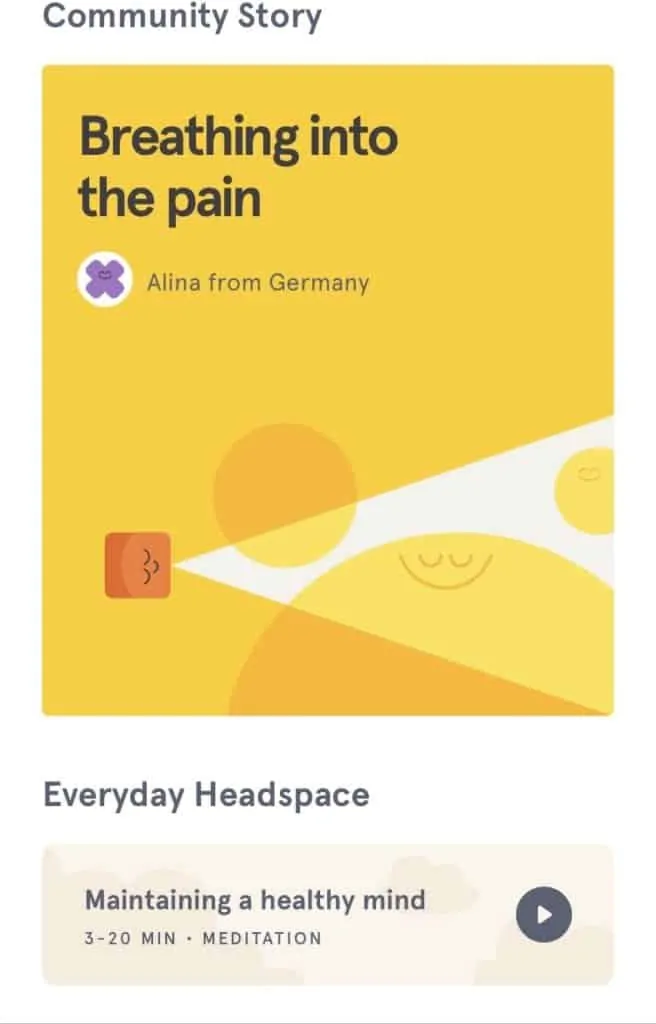
Headspace is another meditation app available on Google Play or the App Store. There is a free version, but because of a student discount, I was able to purchase a full year for $9.99 ($60 off the normal price). Since I had difficulty navigating through the free options of Calm, I sprung for the premium version of Headspace.
And it was worth it.
I began with the 10-course “Basics” program, I figured I’d need to start somewhere. Each class offers you the opportunity to meditate for three, five, or ten minutes, but three minutes is a bit low if you’re looking for any sort of results.
Each class introed with a short animated video explaining the skills you were about to learn and then followed that up with practical exercises to get you started. This was helpful because Headspace made sure that I understood why I was learning specific techniques and how to use them without the app.
I absorbed each course and deep-breathed in bed next to my wife before shutting off the light and going to sleep for the next ten evenings. Clear-headed and mindful, I had some of my best sleep in years after my longer meditation sessions.
But the most profound experience happened in the middle of the month, 15 days after I started my 30-day meditation challenge.
For the first time, I meditated with Rachel.

Side by side, we were coming down from a long day together. I opened up the Headspace app, turned on the Bluetooth stereo, and we just sat together, noting everything beautiful about lives. The voice was there, I could notice the sounds around me, but I felt at peace. It’s hard to describe, but it felt quiet at the same time.
Everything about my life at that moment was perfect. That’s when I realized the power of meditation.
For the days that followed, I found myself less distracted during my meditation sessions, my mind wandering less and less. My body felt at ease within itself. I started my mornings off with a 15-minute meditation, allowing myself to start my day refreshed and motivated to face the world.
And the few nights I felt anxious, I found myself deep breathing without the app, and it worked.
I felt in control of my body and mind.
Lesson 1: Relieves Anxiety
Let us start at the beginning; I wanted to meditate because I wanted a non-Xanax way to deal with my anxiety. Research shows that a “mindfulness-based stress reduction program helped quell anxiety symptoms in people with generalized anxiety disorder, a condition marked by hard-to-control worries, poor sleep, and irritability.” With this knowledge, I knew I needed to give meditation a shot.
My anxiety typically manifests itself through racing thoughts. I’ll often ruminate on something I said or a moment from the past that I can’t get out of my head. Meditation allows you to have those thoughts and gives you the space to let them pass. Over time, you’ll find that it becomes easier and easier to let go of racing thoughts to become clear-minded.
When I first started my 30-day meditation challenge, I actively struggled with a few life realizations (being old can suck sometimes). When I look at my journal from the first night, it’s filled with inconsistent gibberish and anxious thinking. Soon after I started using Headspace, I found those thoughts popping in and out of my mind much less. I felt less anxious and slept better. My journal entries looked like they were in English.
I quickly realized I had found a prescription-free way to cope with my anxiety.
Lesson 2: Improves Concentration
A benefit of slowing down those racing thoughts is that your brain has more room to pay attention. A study found in Psychological Science reveals that “intensive meditation can help people focus their attention and sustain it — even during the most boring of tasks.” As I work, I tend to get distracted a lot, whether it’s a video of a rabbit and dog cuddling, or putzing around on Twitter, consistently paying attention gets hard sometimes.
After recognizing how great meditation was in the evening, I decided to test out how it would work during the day. I’d start my morning off with around 15 minutes of meditation, take the dog out for a walk, and then sit down in my wife and I’s office to get writing. I found myself less distracted while working. I still would end up on Twitter throughout the day. Yet, instead of bouncing around the internet after every sentence, I’d usually wait until a section was completed before moving ahead. Small steps.
I never imagined meditation would be able to help me from procrastinating, but it did. My productivity increased, and I got more work done for Dudefluencer in a week than before I meditated.
Lesson 3: Generates Kindness
When I saw that Headspace offered a course on kindness, I wasn’t sure what it entailed.
Figuring I’ve got at least 10 more days of meditation before my challenge ended, I clicked it and found myself meditating multiple times a week focused on treating myself with kindness. David Desteno studied the effects of meditation on compassion and was able to obtain a finding that connected the two. In his research, Desteno recognized that there was “a lack of compassion fatigue among meditators.” People who meditated moved more quickly to deliver an act of compassion than others. The findings proved that meditation could change the way we treat people on a larger scale.
I’m hard on myself. I beat myself up over the silliest things. I want everything to be perfect, and when it’s inevitably not, I feel like a failure. So before helping other people, I needed to focus on self-love.
Headspace describes their kindness program, “People mistakenly assume that a meditation rooted in compassion begins with a deliberate focus on other people. Not so. We must first cultivate a sense of loving-kindness toward ourselves to be kinder and more forgiving toward others.” As the course continued, I began to experience self-love again. In journal entries, I used more positive language and highlighted my accomplishments more than my faults.
Instead of being frustrated or angry with myself, I began to allow myself the opportunities to make mistakes. I took Ben Horowitz’s advice from his book, The Hard Thing About Hard Things: accept failure and move towards finding a solution.
Practicing kindness changed my mindset.
Lesson 4: Practice Gratitude
I never realized the importance of gratitude until I started meditating more often. One of the best ways to experience gratitude is with a morning meditation where you imagine all of the amazing aspects of your life that you feel grateful for, and express those emotions honestly and clearly. Over the past eight months, I’ve realized how empowering those emotions can be.
By practicing gratitude on a daily basis, you’re also working on yourself. Gratitude is a key aspect of men’s self-care as it allows us to gain strength from the most important parts of our life. And living a life of gratitude also fulfills a few of the six human needs men live with.
As part of your 30-day meditation challenge, I ask that you throw in some gratitude exercises in the morning. I promise that after a few of them, you too will begin to see the impact and power of meditation.
Lesson 5: Awaken Spirituality
I’ve told this story before, but during Tony Robbins’s Unleash the Power Within I had my first spiritual moment. During an intense meditation, I closed my eyes and as my next important decision continued to build up, I felt this red light beaming through me. Every breath I took, it grew bigger and bigger, taking the next step felt like an inevitability rather than something I could continue to avoid.
And what I realized at that moment was that spirituality wasn’t something for only people who practiced religion: but spirituality and more importantly, spiritual moments could affect anyone. My life was changed, and I truly believe that if you go full-out on your 30-day meditation challenge, yours can too.
Was the 30-day meditation challenge a success?
Over the course of January, I logged over four hours of meditation, hitting my goals for most of the month. At the end of January, Rachel and I took a trip back to Buffalo to visit my parents and friends, and unfortunately, I fell off the wagon.
Hard.
I missed one night, I told myself it was okay. I missed a second night, it’s because I was too tired. Third night, fourth night. I lost out on over an hour of meditation time during this mini-vacation, I found my rhythm to be off and I wasn’t feeling great.
When Rachel and I arrived back home a week later, I made it a point to resume my meditation schedule. And I have. For the past eight months I’ve found myself meditating on a near-daily basis, making it an essential part of my morning routine. It took a few months for everything to kick in, but without the 30-day meditation challenge pushing me to keep going in the beginning, I don’t know if I would have been able to achieve my spiritual moment otherwise.
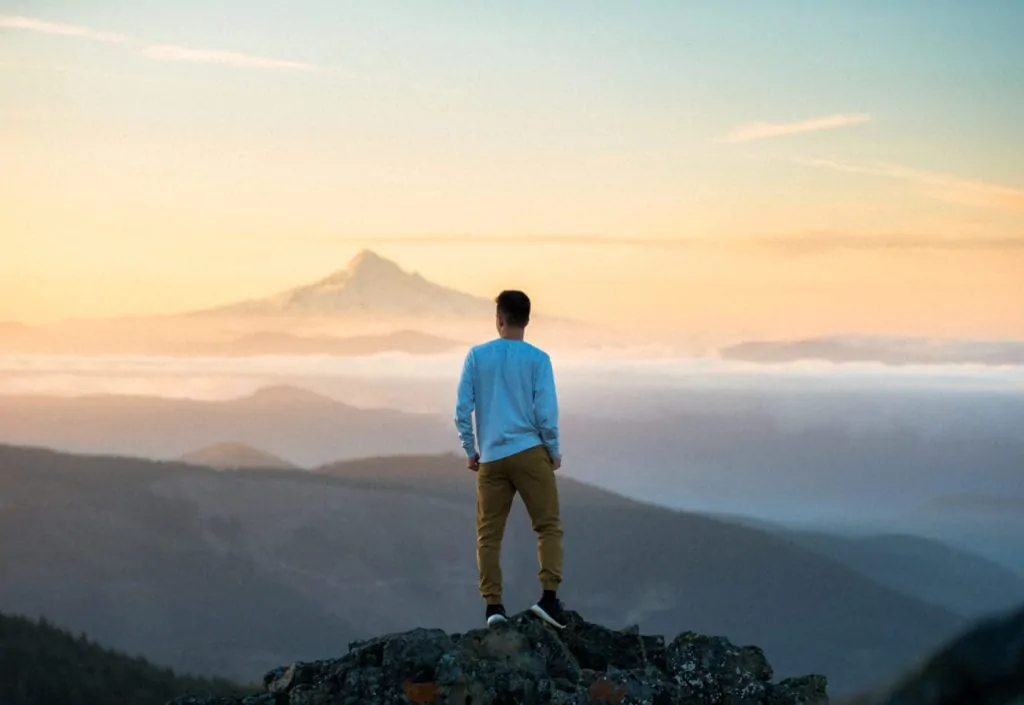
As for the programs, I cannot recommend Headspace enough (and no, this isn’t a sponsored post). With no prior experience meditating, I found the guided sessions to be informative and relaxing. The voice narrators spoke in a way that welcomed and encouraged. During some courses, there will be a brief moment in the middle where there’s just silence, you and your thoughts. These moments of quiet were some of the most profound during my 30-day meditation challenge.
The guided sessions also provided me with enough knowledge that I meditated (albeit briefly) without the app some evenings, and more importantly, the course selection allowed me to focus on specific actions.
Meditating has done so much good for my mental health; I feel stronger, confident, and mindful of the world around me.
So was the 30-day meditation challenge a success? Absolutely.
Conclusion
What are some of your favorite ways to meditate? Have thoughts on Calm or Headspace? Let us know in the comments below.


6 Responses
This is a well thought out and insightful post, I love it! I am so glad you found your meditation experiment to be successful and have turned it into a continued habit because you enjoyed the experiences this last month. I don’t use apps so much but when I do meditate I typically listen to guided meditations on YouTube. 🙂
Love this post and it has made me consider conducting my own challenge.
Great Post, so encouraging! I am doing a 29-Day Meditation challenge for February and I look forward to experiencing the same benefits as you!
Great post! I too started to meditate again this year. I begun a few years ago when I was about to have my first important school exam but kind of left it there without going so far. I’m trying different guided meditation right now because I’m kind of struggling. I like to be super proactive in general so it’s hard to quiet the mind for me, but definitely with practice I’m sure it will come and be beneficial.
Meditation has so many scientifically proven benefits. I’ve also tried Headspace & Calm, and I actually prefer Calm. The paid version has so much more to offer than the free version (same with Headspace). They’re both great apps! I’m glad you found one that works well for you.
I agree. I think if I spent more time with Calm, I may have had a different experience. Do you have any favorite meditations from Calm you could suggest?